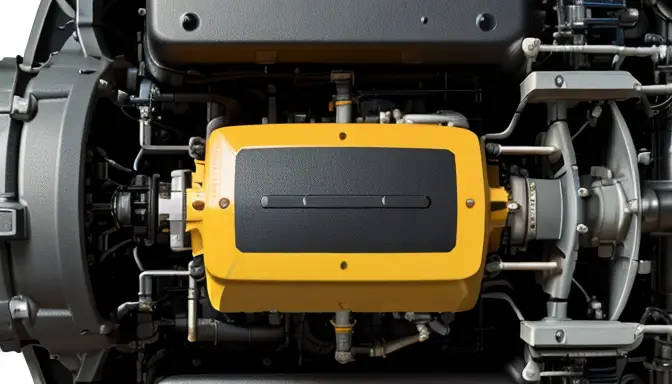When it comes to understanding the fuel consumption of the Caterpillar C32 engine, there are various factors at play that impact its performance and efficiency. From the advanced technologies integrated into the engine to the operational and environmental influences on fuel consumption, delving into this topic reveals the intricacies of maximizing efficiency while maintaining optimal power output. Let’s explore the key aspects that contribute to the fuel consumption analysis of the Caterpillar C32 engine.
Overview of the Caterpillar C32 Engine
The Caterpillar C32 engine is a powerhouse known for its exceptional performance and reliability across various industries. With a robust design and cutting-edge technology, this engine is a top choice for applications that demand high power output and efficiency.
Key features of the Caterpillar C32 engine include a high power-to-weight ratio, advanced fuel injection system, and superior cooling capabilities. Its versatile design allows for seamless integration into marine vessels, power generation units, and heavy-duty machinery.
Applications of the Caterpillar C32 engine span from marine propulsion and auxiliary power to industrial power generation and mining equipment. Its adaptability and durability make it a preferred choice for demanding operations that require consistent performance.

Fuel Efficiency Technologies
When it comes to fuel efficiency technologies, the Caterpillar C32 engine stands out with its innovative features designed to optimize performance and reduce fuel consumption. Let’s delve into the advanced technologies that make this engine a powerhouse of efficiency:
- Electronic Control Module (ECM): The ECM system plays a crucial role in regulating fuel injection timing and quantity in the Caterpillar C32 engine. By precisely controlling these parameters, the engine can operate at peak efficiency levels, ensuring minimal fuel wastage.
- Variable Geometry Turbocharger (VGT): The VGT technology integrated into the Caterpillar C32 engine is a game-changer in terms of enhancing power output while simultaneously reducing fuel consumption. By adjusting the turbine geometry based on engine requirements, the VGT optimizes performance without compromising efficiency.
Electronic Control Module (ECM)
When it comes to the fuel consumption analysis of the Caterpillar C32 engine, one crucial component that plays a significant role is the Electronic Control Module (ECM). The ECM system is like the brain of the engine, responsible for regulating fuel injection timing and quantity to ensure optimal efficiency and performance. By continuously monitoring various engine parameters, the ECM can make real-time adjustments to enhance fuel consumption and overall engine operation.
Here are some key aspects of the Electronic Control Module (ECM) in the Caterpillar C32 engine:
- Real-time Monitoring: The ECM constantly monitors engine speed, load demand, temperature, and other variables to adjust fuel injection accordingly.
- Optimized Fuel Delivery: By precisely controlling the timing and quantity of fuel injection, the ECM maximizes fuel efficiency without compromising power output.
- Diagnostic Capabilities: The ECM also has diagnostic functions to detect any potential issues or irregularities in the engine performance, allowing for timely maintenance and troubleshooting.
Variable Geometry Turbocharger (VGT)
The Variable Geometry Turbocharger (VGT) technology in the Caterpillar C32 engine is a game-changer when it comes to balancing power and fuel efficiency. By adjusting the angle of the turbine blades based on engine speed and load demand, the VGT system optimizes airflow to the engine, resulting in improved combustion efficiency and power output. This innovative technology ensures that the engine performs at its peak while consuming fuel judiciously.
Key benefits of the Variable Geometry Turbocharger (VGT) system include:
- Enhanced Power Output: By maximizing airflow to the engine, the VGT technology boosts the engine’s power output without compromising fuel efficiency.
- Fuel Savings: The precise control of airflow allows the engine to operate more efficiently, leading to significant fuel savings over time.
- Reduced Emissions: The optimized combustion process facilitated by the VGT system results in lower emissions, making the engine more environmentally friendly.
Moreover, the Variable Geometry Turbocharger (VGT) technology adapts seamlessly to changing operating conditions, ensuring consistent performance across different load demands and engine speeds. This dynamic adjustment capability sets the Caterpillar C32 engine apart, making it a top choice for industries that prioritize both power and fuel efficiency.
Factors Influencing Fuel Consumption
When it comes to the fuel consumption of the Caterpillar C32 engine, various factors play a crucial role in determining its efficiency and performance. Let’s delve into the key influencers that impact the fuel consumption patterns of this powerful engine:
- Load Demand and Speed: The fluctuating load demands and engine speeds significantly influence the fuel consumption of the Caterpillar C32 engine. Understanding how these variables interact is essential in optimizing fuel efficiency.
- Fuel Quality and Maintenance: The quality of fuel used and the regular maintenance practices adopted have a direct impact on the overall fuel consumption of the engine. Ensuring high-quality fuel and adherence to maintenance schedules are vital for optimal performance.
By considering these factors and implementing efficient practices, users can maximize the fuel efficiency of the Caterpillar C32 engine, leading to enhanced performance and cost-effectiveness in various operational settings.
Load Demand and Speed
When it comes to the fuel consumption of the Caterpillar C32 engine, the interplay between load demand and speed plays a crucial role. Imagine a roller coaster ride where the speed and weight of the passengers determine how much fuel is needed to reach the top of each peak. Similarly, the load demand and engine speed dictate the amount of fuel consumed by the C32 engine during operation.
At lower speeds and lighter loads, the engine works more efficiently, consuming less fuel per unit of work done. On the other hand, higher speeds and heavier loads require more fuel to maintain performance, resulting in increased fuel consumption. It’s like driving a car uphill versus cruising on a flat road – the effort and fuel needed are significantly different.
Factors such as terrain, payload, and operational conditions further influence how load demand and speed impact fuel consumption. By optimizing the engine settings based on these variables, operators can achieve a balance between power output and fuel efficiency, maximizing the performance of the Caterpillar C32 engine.
Fuel Quality and Maintenance
When it comes to the fuel quality and maintenance of the Caterpillar C32 engine, there are critical factors that play a significant role in ensuring optimal performance and efficiency. One of the key aspects to consider is the quality of the fuel being used. The engine is designed to operate efficiently with high-quality fuel that meets the specified standards. Using low-quality or contaminated fuel can lead to issues such as poor combustion, increased emissions, and reduced engine lifespan.
Regular maintenance is another crucial element in maintaining the fuel efficiency of the Caterpillar C32 engine. This includes scheduled inspections, oil changes, filter replacements, and overall system checks. By adhering to the recommended maintenance schedule, potential problems can be identified and addressed promptly, preventing any significant impact on fuel consumption and overall performance.
Moreover, proper storage and handling of fuel are essential to prevent contamination and ensure the fuel remains in optimal condition. Any contaminants or impurities in the fuel can negatively affect the engine’s performance and efficiency. Implementing best practices for fuel storage and handling can help prolong the engine’s lifespan and maintain its efficiency over time.
Frequently Asked Questions
- What is the typical fuel consumption rate of the Caterpillar C32 engine?
The fuel consumption rate of the Caterpillar C32 engine can vary based on factors such as load demand, engine speed, and maintenance practices. On average, this engine is known for its fuel efficiency compared to others in its class.
- How does the Electronic Control Module (ECM) contribute to fuel efficiency?
The ECM in the Caterpillar C32 engine plays a crucial role in optimizing fuel consumption by precisely controlling the timing and quantity of fuel injection. This technology ensures that the engine operates at peak efficiency levels.
- What measures can be taken to enhance the fuel efficiency of the Caterpillar C32 engine?
To improve fuel efficiency, it is recommended to maintain consistent load demands, adhere to proper maintenance schedules, use high-quality fuel, and leverage the advanced technologies like Variable Geometry Turbocharger (VGT) integrated into the engine.
- What Happened to Bluewater Yachts? The Inside Story - May 31, 2024
- Upgrade Your Boat’s Water Pump to the Mach 5 - May 30, 2024
- Upgrade Your Boat with the Big Stuff Stuffing Box - May 30, 2024


